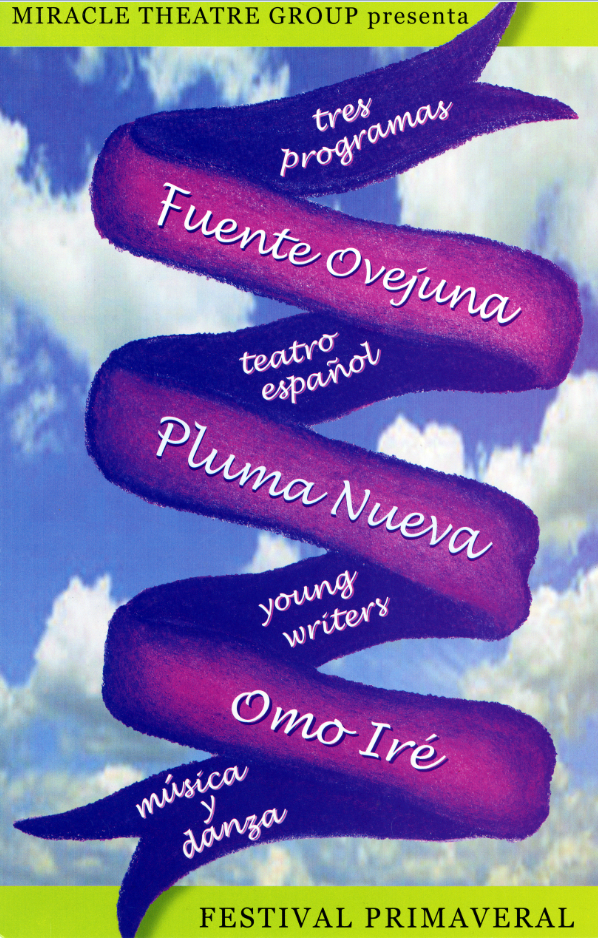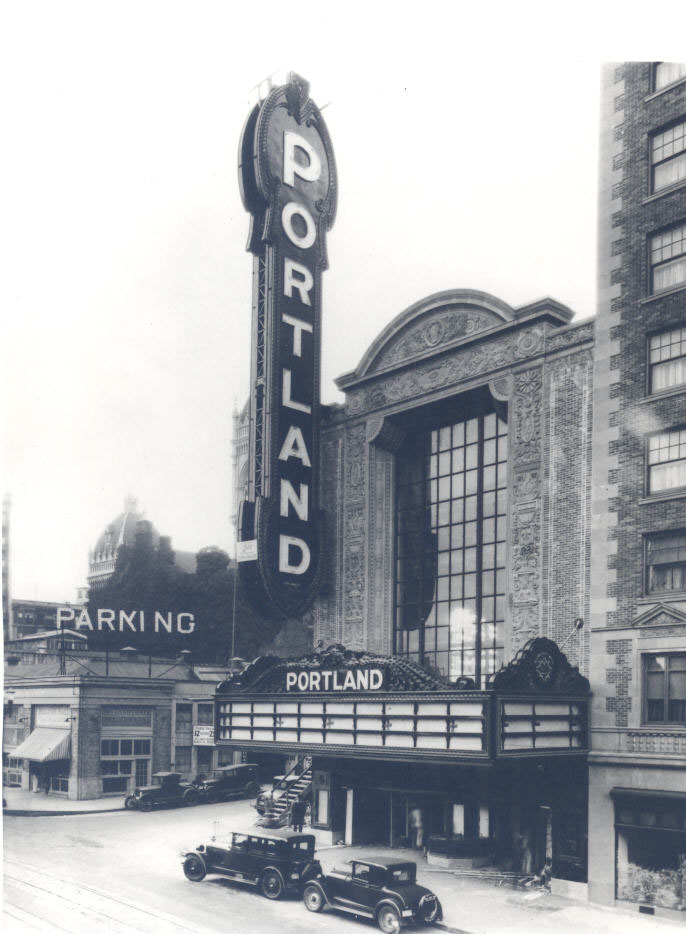Portland Civic Theatre was at the forefront of a transitional movement for theater companies in American cities during the 1910s and 1920s. Live theater was disappearing as people flocked to motion pictures, and once-thriving stock theaters were closing, leaving a vacuum for those who appreciated live performances. As part of the Little Theatre Movement, Portland Civic Theatre staged performances in Portland from 1927 until 1990.
The organization had its beginnings as a germ of an idea over tea at the Meier & Frank department store in 1926. Bess Whitcomb, a local drama coach, overheard Susan Farrell and Florence Bristol talking about the lack of opportunities for their daughters to participate in live theater. She introduced herself and proposed a community theater, which they named Art Theatre Players. A board of directors was formed in 1927, and the company’s first production, Henrietta the Eighth, was performed at the Turn Verein Gymnasium on Southwest Thirteenth Avenue.
Mildred Allen Butler was named the company’s first professional director, and the company, comprised of local actors and artists, produced six or so shows a year. Most performances were at the Studio Building on Southwest Taylor Street, with some shows at the Reed College Bowl, Portland Women's Club, Neighbors of Woodcraft, and the Murlark Building. The casts included a number of prominent Portland business owners.
The company merged with several competing companies in 1929 and was renamed Portland Civic Theatre. In 1934, Doris Smith was named the first dean of the Portland Civic Theatre School, which offered classes for adults. The school’s studio moved to the Murlark Dance Hall on Twenty-third Avenue and West Burnside, where it opened the Blue Room, an arena-style theater that offered an intimate setting. According to Mary Brand, founder of the Portland Civic Theatre Guild, the theater had “the distinction of being the first…of its kind, that of being a non-profit organization, to employ this particular type of presentation.”
Donald Mayre was the director of the Portland Civic Theatre from 1937 to 1949. Suffering growing pains and in need of a permanent performance space, Portland Civic launched a fund-raising drive in 1940 to purchase property at Southwest Fifteenth Avenue and Yamhill, which opened in 1942 with George and Margaret and Jim Dandy in repertory. A Junior School opened in 1944 and offered classes for children through high school age.
Jim Cameron was named director in 1949, and by 1955 the Portland Civic had built an extension for the Blue Room with increased seating for about 120. Mary Brand formed the Portland Civic Theatre Guild in 1958 as an auxiliary support group that sponsored theatrical readings to raise money. The Guild is still active in Portland, supporting students, companies, and playwrights and staging readings.
By 1973, Isabella Chappell was the general manager. Bill Dobson, a guest director, suggested developing a summer program to bring in more theatergoers, an idea that led to Summer Repertory Onstage (S.R.O.), which paid actors for performances. Paying performers was a revolutionary idea for a community theater that had always relied on volunteers.
In 1985, Paul Douroumis took over as executive director. Two years later, the Portland Center for the Performing Arts (now Portland’5 Centers for the Arts) opened, and Portland Civic produced the opening performance of the Intermediate Theater (now Newmark Theatre) with a production of Sunday in the Park with George. The show was a success, but Portland Civic Theatre was not able to achieve residency at the new theater.
By the late 1980s, the turnover of managers and Portland Civic’s debt continued to rise. It was during this time that Sondra Perlman created the Portland Civic Theatre for Youth Program, which became the Oregon Children’s Theatre in 1988. By 1990, the Portland Civic's financial difficulties were severe and the building was sold.
At the time of its closing, Portland Civic Theatre was the longest running community theater in Portland and one of the largest community theaters in the nation in terms of budget. The building at Southwest Fifteenth Avenue and Yamhill was demolished in 1993 and replaced with a parking lot. The Portland Civic Theatre Guild installed a plaque at the site to honor the theater.
-
![]()
Costume fitting at the Portland Civic Theatre, 1939.
Oregon Historical Society Research Library, Al Monner, Org. Lot 1284
-
![]()
Portland Civic Theatre, on SW Yamhill, Sept. 20, 1950.
Oregon Historical Society Research Library, Al Monner, Org. Lot 1284
-
![]()
Props manager Sigfrid Unander (left) and stage manager Jackie King at Portland Civic Theatre, 1950.
Oregon Historical Society Research Library, Al Monner, Org. Lot 1284
-
![]()
Inside the Portland Civic Theatre, on SW Yamhill, Sept. 20, 1950.
Oregon Historical Society Research Library, Al Monner, Org. Lot 1284
Related Entries
-
![Milagro Theatre]()
Milagro Theatre
The Miracle Theatre Group, known as Milagro, is a premier Latino arts a…
-
![Portland Paramount Theatre/Arlene Schnitzer Concert Hall]()
Portland Paramount Theatre/Arlene Schnitzer Concert Hall
The Portland Paramount Theatre once dominated the city’s Great White Wa…
Map This on the Oregon History WayFinder
The Oregon History Wayfinder is an interactive map that identifies significant places, people, and events in Oregon history.
Further Reading
“What We Did For Love" (brochure). Portland Civic Theatre Guild, History and Chronology, 1995.
“Portland Civic Theatre, a Community Workshop Designed for the Enhancement of the Living Stage" (brochure). Portland Civic Theatre Development Brochure, history and essays, 1953.
Portland Civic Theatre records, c.1925-2000. Mss 2965, Oregon Historical Society Research Library, Portland.
Oral history of Isabella Chappell, 1977. SR 9534, Oregon Historical Society Research Library, Portland.
Oral history of Edris Morrison. SR 9539, Oregon Historical Society Research Library, Portland.
Oral history of Isabelle Ashcraft. SR 9532, Oregon Historical Society Research Library, Portland.






